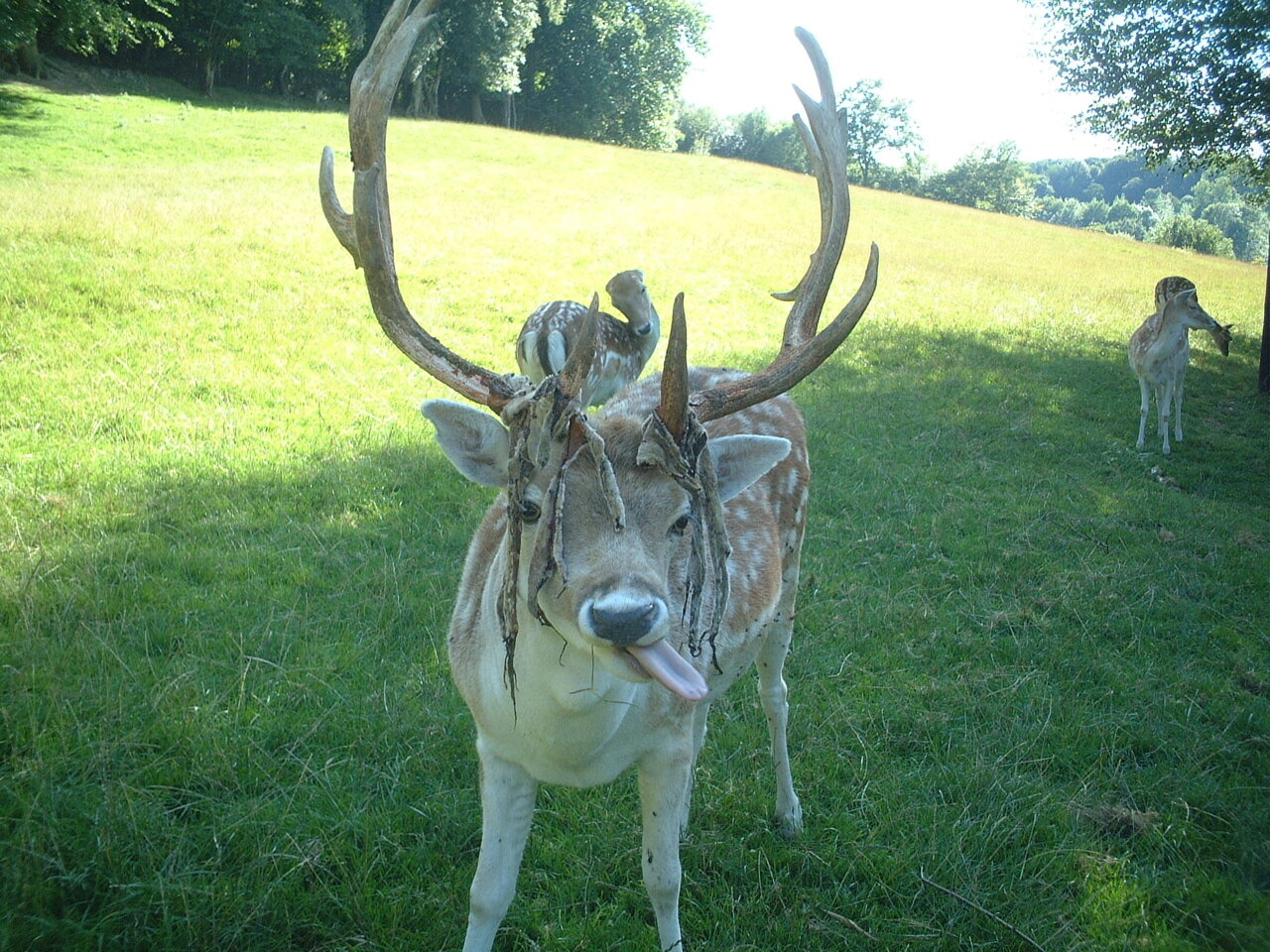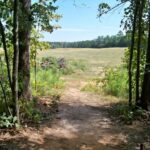Bleeding a deer is a crucial step in the hunting process, ensuring the proper handling of the animal and preserving the quality of the meat. Whether you’re a seasoned hunter or just starting out, understanding the techniques and importance of bleeding a deer is essential.
In this comprehensive guide, we’ll delve into the methods, equipment, and safety precautions involved in bleeding a deer effectively.
Bleeding Methods

Bleeding a deer is an important part of field dressing, and there are two main methods: internal and external.
Internal bleeding involves cutting the deer’s throat and allowing the blood to drain out. This is the most effective method, but it can be messy and requires some practice.
External Bleeding
External bleeding involves cutting the deer’s jugular vein and carotid artery in the neck. This is a less effective method than internal bleeding, but it is easier to do and less messy.
Importance of Proper Hygiene
When bleeding a deer, it is important to practice proper hygiene to prevent the spread of disease. This includes wearing gloves and washing your hands thoroughly after handling the deer.
Equipment and Tools

Bleeding a deer requires specific equipment and tools to ensure a clean and efficient process. Choosing the right gear for the job is crucial to minimize waste and maintain the quality of the meat.
The essential tools for bleeding a deer include:
Knife
- A sharp, high-quality knife is essential for making precise cuts to sever the blood vessels.
- Choose a knife with a blade length of 3-4 inches, a drop-point or clip-point style, and a sturdy handle.
Saw, Bleeding a deer
- A saw is used to cut through the sternum and ribs to access the heart and lungs.
- Select a saw with a fine-toothed blade for a clean and precise cut.
Gambrel
- A gambrel is a metal hook used to hang the deer upside down for bleeding and field dressing.
- Choose a gambrel with a strong construction and adjustable hooks to accommodate different deer sizes.
Gloves
- Gloves protect your hands from blood and potential contaminants.
- Choose waterproof and durable gloves that provide a good grip.
Field Dressing Techniques
Field dressing a deer is a crucial step in the hunting process. It involves removing the organs and viscera to preserve the meat and prevent spoilage. Proper field dressing techniques ensure that the meat remains clean, fresh, and safe for consumption.
To begin, it’s essential to have the right equipment, including a sharp knife, gloves, and a game bag. Position the deer on its back with its head downhill to facilitate drainage.
Opening the Body Cavity
Using a sharp knife, make a clean incision along the deer’s belly from the sternum to the pelvic bone. Avoid cutting into the intestines.
Removing the Organs
Reach into the body cavity and carefully remove the organs, including the heart, lungs, liver, and intestines. Handle the organs gently to prevent tearing or contamination.
Cleaning the Body Cavity
Once the organs are removed, rinse the body cavity thoroughly with clean water to remove any blood or debris. Use a clean cloth or sponge to wipe down the inside of the cavity.
Preserving the Meat
To prevent spoilage, it’s crucial to cool the meat as soon as possible. Place the deer in a shaded area or on ice. If possible, hang the deer upside down to allow any remaining blood to drain out.
Storing the Meat
Once the deer is cooled, place it in a clean game bag and store it in a cool, dry place. If you’re not able to consume the meat immediately, consider freezing it to preserve its quality.
Hanging and Aging
Hanging and aging venison is a traditional method of preserving and enhancing the flavor of deer meat. This process allows enzymes within the meat to break down connective tissues, resulting in a more tender and flavorful product.The optimal conditions for hanging and aging venison include a temperature range of 32-38°F (0-3°C) and a humidity level of 75-85%.
These conditions prevent spoilage while allowing the aging process to occur. Venison should be hung in a well-ventilated area to prevent the buildup of moisture and bacteria.
Hanging Methods
There are several methods for hanging venison, including:
- Using a gambrel: A gambrel is a metal hook that is inserted into the Achilles tendons of the deer’s hind legs. The deer is then hung from a beam or rafter.
- Using a tripod: A tripod is a three-legged stand that can be used to support the deer while it is aging. The deer is hung from the tripod using ropes or chains.
- Using a tree limb: If a suitable tree limb is available, it can be used to support the deer while it is aging. The deer is hung from the limb using ropes or chains.
Aging Time
The aging time for venison will vary depending on the size of the deer and the desired level of tenderness. Smaller deer will age more quickly than larger deer. As a general rule, venison should be aged for at least 7 days, but it can be aged for up to 21 days or longer.
Monitoring the Aging Process
During the aging process, it is important to monitor the venison regularly to ensure that it is not spoiling. The meat should be firm to the touch and have a slight gamey smell. If the meat becomes slimy or develops an off odor, it should be discarded.
Butchering and Processing

After field dressing your deer, the next step is to butcher and process the meat. There are several different butchering methods you can use, each with its own advantages and disadvantages. The most common methods include:
- Whole carcass method:This is the simplest method, but it results in less meat yield than other methods. To butcher a deer using this method, simply remove the head, legs, and internal organs. Then, cut the carcass into large pieces and package it for freezing.
- Boning out method:This method requires more skill than the whole carcass method, but it results in a higher meat yield. To bone out a deer, you will need to remove the meat from the bones. This can be done using a knife or a meat saw.
- Cut and wrap method:This method is a compromise between the whole carcass and boning out methods. To butcher a deer using this method, you will need to remove the head, legs, and internal organs. Then, cut the meat into smaller pieces and wrap it for freezing.
The best butchering method for you will depend on your experience level, the amount of time you have available, and the equipment you have. If you are a beginner, the whole carcass method is a good place to start. If you are more experienced, you may want to try the boning out method or the cut and wrap method.
Cuts of Meat
The cuts of meat you get from a deer will vary depending on the butchering method you use. However, some of the most common cuts include:
- Backstrap:This is the most tender cut of meat on the deer. It is located along the spine.
- Tenderloin:This is another very tender cut of meat. It is located on the inside of the backstrap.
- Ribs:The ribs are a good source of meat and flavor. They can be cooked in a variety of ways, such as grilling, roasting, or braising.
- Shoulder:The shoulder is a large, muscular cut of meat. It is best cooked slowly, such as by braising or stewing.
- Leg:The leg is another large, muscular cut of meat. It can be cooked in a variety of ways, such as grilling, roasting, or smoking.
Tips for Maximizing Yield and Quality
Here are a few tips for maximizing the yield and quality of your deer meat:
- Use a sharp knife.A sharp knife will make it easier to cut through the meat and bones, which will result in a cleaner cut and less waste.
- Cut against the grain.When you cut against the grain, you are cutting across the muscle fibers. This makes the meat more tender.
- Remove the silver skin.The silver skin is a thin membrane that covers the muscles. It can be tough and chewy, so it is important to remove it before cooking.
- Trim the fat.Fat can add flavor to the meat, but too much fat can make it greasy. Trim off any excess fat before cooking.
- Age the meat.Aging the meat allows the enzymes in the meat to break down the connective tissue, which makes it more tender. You can age the meat in a refrigerator for up to 10 days.
Storage and Preservation
Proper storage and preservation techniques are crucial for maintaining the quality and safety of venison. Various methods exist, each with its own advantages and disadvantages. Understanding these methods will ensure that your venison remains palatable and wholesome.
Freezing
Freezing is a widely used method for preserving venison due to its effectiveness and convenience. It halts enzymatic activity and microbial growth, extending the shelf life significantly. Vacuum-sealing or wrapping venison in freezer-safe bags or containers helps prevent freezer burn and moisture loss.
After a successful hunt, it’s essential to bleed the deer properly to ensure the best quality of venison. One way to enhance the flavor and preservation of the meat is to use deer smoke sticks . These sticks can be hung inside the cavity of the deer, allowing the smoke to penetrate the meat and infuse it with a rich, smoky flavor.
The bleeding process is crucial not only for taste but also for hygiene, as it removes impurities and prevents spoilage.
However, freezing can alter the texture of venison, making it slightly tougher.
Refrigeration
Refrigeration can be used for short-term storage of venison. It slows down microbial growth but does not prevent it entirely. Venison should be refrigerated within 24 hours of harvest and consumed within a few days. Ground venison has a shorter shelf life than whole cuts and should be used within a day or two.
Canning
Canning involves sealing venison in airtight jars and heating them to a high temperature to kill bacteria. This method provides long-term storage, but it requires specialized equipment and can alter the flavor and texture of venison.
Bleeding a deer is an essential step in field dressing. After gutting the deer, you need to cut the neck and allow the blood to drain out. This will help to prevent spoilage and make the meat more flavorful. If you’re looking for a fun way to celebrate the hunting season, check out the blues festival brown deer . This annual event features live music, food, and drinks, and it’s a great way to relax and enjoy the outdoors.
After the festival, you can head back to camp and finish bleeding your deer.
Drying
Drying is an ancient method of preserving venison. It involves removing moisture from the meat, either through air drying or using a dehydrator. Dried venison is shelf-stable and can be stored for extended periods. However, it has a distinct flavor and texture that may not be to everyone’s taste.
Smoking
Smoking is a traditional method that combines drying with the addition of smoke. It imparts a unique flavor and aroma to venison while also preserving it. Smoked venison can be stored for several months in a cool, dry place.
Guidelines for Handling and Storage
* Handle venison with clean hands and utensils to prevent contamination.
- Cool venison rapidly after harvest to prevent bacterial growth.
- Store venison in a clean, well-ventilated refrigerator or freezer.
- Vacuum-seal or wrap venison properly to prevent moisture loss and freezer burn.
- Thaw frozen venison in the refrigerator or under cold running water.
- Cook venison thoroughly to an internal temperature of 160°F (71°C) to ensure safety.
Troubleshooting and Safety

When bleeding a deer, there are a few common problems that can occur. Here are some troubleshooting tips to help you resolve these issues:
It is important to take safety precautions when bleeding and handling deer. Here are a few tips to help you stay safe:
Common Problems and Solutions
- The deer is not bleeding well.This can be caused by a number of factors, including:
- The knife is not sharp enough.
- The cut is not deep enough.
- The deer is not hanging properly.
- The deer is still alive.
Solutions:
- Sharpen the knife.
- Make a deeper cut.
- Hang the deer properly.
- Confirm that the deer is dead.
- The blood is not draining properly.This can be caused by a number of factors, including:
- The deer is not hanging properly.
- The blood is clotting.
- There is a blockage in the drainage hole.
Solutions:
- Hang the deer properly.
- Add salt to the blood to prevent clotting.
- Clear the blockage in the drainage hole.
- The deer is still alive.This can be a dangerous situation. If the deer is still alive, you should not attempt to bleed it. Instead, you should call for help.
Safety Precautions
- Wear gloves when handling deer.This will help to protect you from bacteria and other contaminants.
- Wash your hands thoroughly after handling deer.This will help to prevent the spread of disease.
- Be aware of your surroundings when bleeding a deer.Make sure that there are no other people or animals in the area.
- Use a sharp knife.A sharp knife will make a clean cut and help to prevent the deer from suffering.
- Hang the deer properly.This will help to ensure that the blood drains properly.
- Be careful not to cut yourself.If you do cut yourself, wash the wound thoroughly and seek medical attention if necessary.
Last Recap
Bleeding a deer is not only a necessary task for hunters but also a skill that contributes to the ethical treatment of the animal and the preservation of its meat. By following the techniques Artikeld in this guide, you can ensure a clean and efficient bleeding process, resulting in high-quality venison that you and your family can enjoy.
Question Bank: Bleeding A Deer
Why is it important to bleed a deer immediately after harvesting?
Bleeding a deer immediately after harvesting helps to remove blood from the meat, preventing spoilage and improving the flavor and quality of the venison.
What are the essential tools needed for bleeding a deer?
Essential tools include a sharp knife, gloves, a field dressing kit, and a gambrel for hanging the deer.
How long should a deer be hung before processing?
The optimal hanging time for a deer depends on the temperature and humidity, but generally, it should be hung for at least 24 hours before processing.



